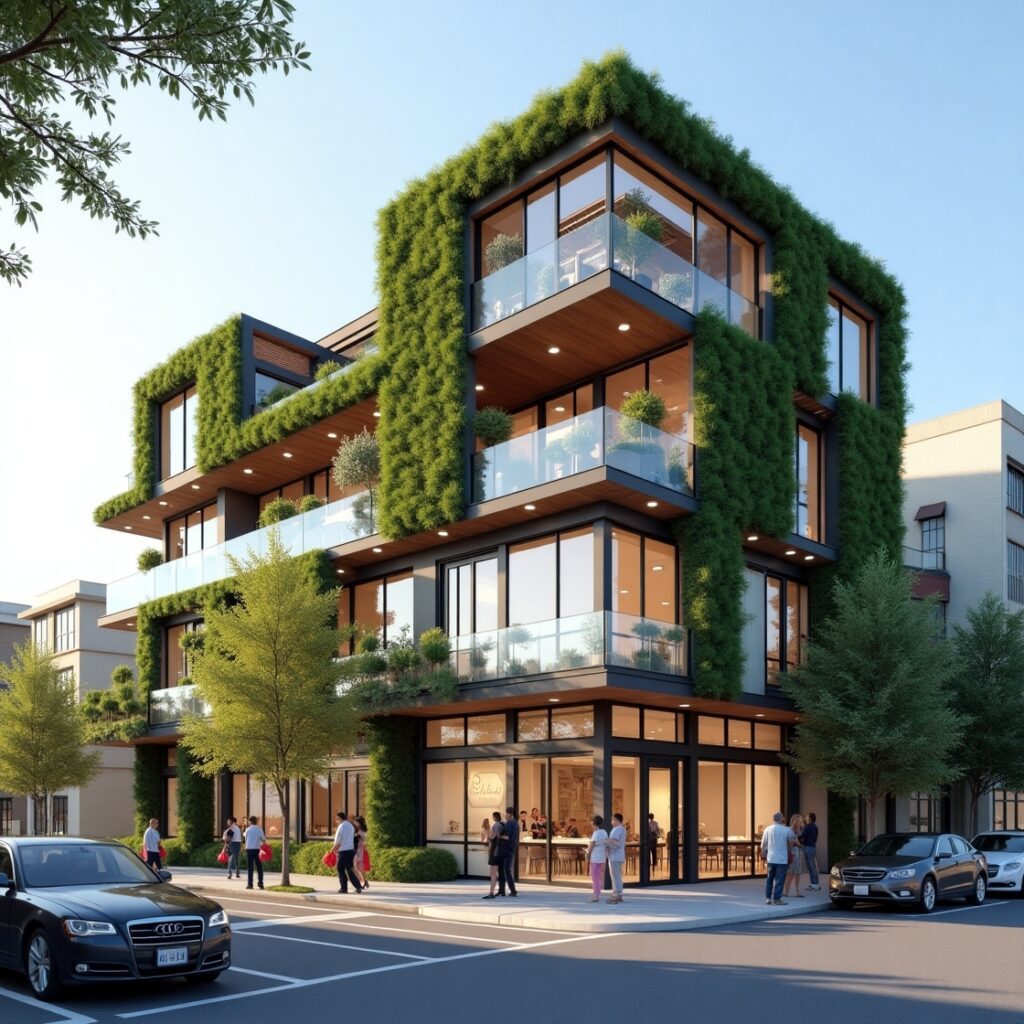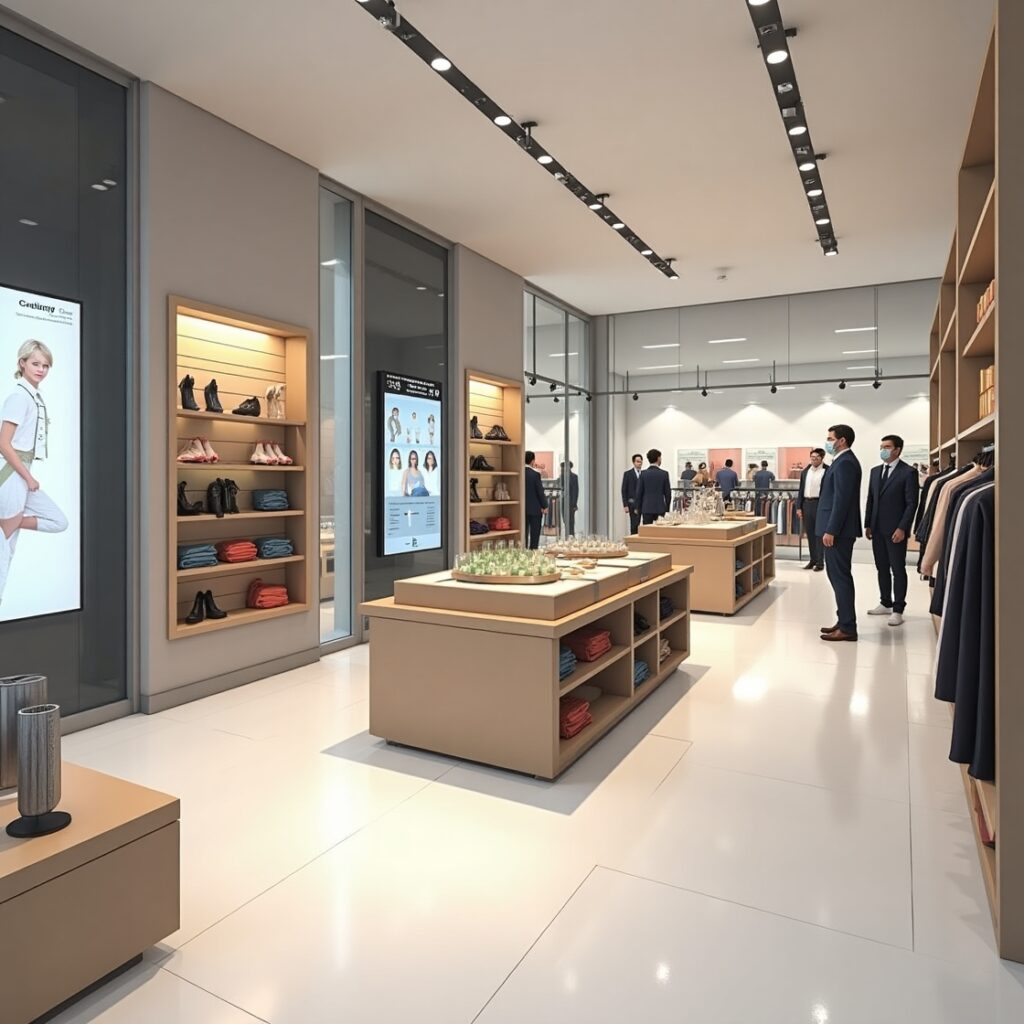The commercial spaces of today and tomorrow are vastly different from those of the pre-pandemic era. The global health crisis, coupled with evolving work models and consumer behaviors, has accelerated fundamental shifts in how we design, use, and perceive offices, retail establishments, and hospitality venues. The future of commercial spaces is not just about aesthetics; it’s about redefining functionality, prioritizing well-being, and embracing unprecedented flexibility.
The world has fundamentally changed, and with it, the purpose and design of commercial spaces. What was once primarily about maximizing density and efficiency has transformed into a complex equation balancing health, flexibility, technology, and human connection. Businesses are now reimagining their physical footprints, moving beyond mere recovery to actively future-proofing their environments for a dynamic, often hybrid, world. From corporate offices in bustling cities like Saharanpur to boutique hotels and retail outlets, these shifts are creating spaces that are not only safer but also more adaptable, engaging, and sustainable.
Redefining the Office: From Cubicles to Collaborative Ecosystems
The traditional office, once a fixed hub, is undergoing the most dramatic transformation. With the rise of remote and hybrid work models, the office is no longer just a place to perform tasks, but a destination for collaboration, innovation, and company culture.
Focus on Flexibility and Agile Workspaces
Modular Furniture and Movable Walls: Static layouts are out. Offices are being designed with modular furniture and reconfigurable walls that can be easily rearranged to create different zones for focused work, collaborative brainstorming, or large team meetings.
Activity-Based Working: Instead of assigned desks, employees have a variety of spaces to choose from – quiet pods for deep work, vibrant communal tables for team projects, and comfortable lounge areas for informal discussions. This supports diverse work styles and optimizes space utilization.
Hoteling and Desk Reservation Systems: With fewer employees in the office daily, reservation systems for desks and meeting rooms are becoming the norm, allowing companies to efficiently manage their footprint.
Prioritizing Health and Well-being
Enhanced Indoor Air Quality: Advanced HVAC systems with HEPA filters, increased fresh air circulation, and smart ventilation controls are now standard. Designers are also incorporating operable windows where possible to allow natural airflow.
Biophilic Design: Bringing the outdoors in is a major trend. More natural light, abundant indoor plants, living walls, and natural materials like wood and stone create calming, stress-reducing environments that boost productivity and mood.
Wellness Zones: Offices are dedicating spaces for relaxation, meditation, quiet contemplation, or even light exercise. These areas acknowledge the importance of mental and physical well-being.
Ergonomic Furniture: The focus on employee comfort extends to ergonomic chairs and desks, promoting better posture and reducing strain, particularly for those splitting time between home and office.
Seamless Integration of Technology
Touchless Technologies: Motion-activated lights, sensor-based faucets, automatic doors, and voice-activated controls are becoming ubiquitous to minimize germ transmission.

Advanced AV Systems for Hybrid Meetings: Meeting rooms are being equipped with high-quality cameras, microphones, and interactive displays to ensure seamless communication between in-office and remote participants, making virtual collaboration as engaging as in-person.
Smart Building Systems: IoT sensors monitor everything from occupancy and air quality to energy consumption, allowing for optimized building management and a healthier environment.
Retail Reimagined: Experience, Safety, and Omni-Channel Integration
The pandemic accelerated the shift to online shopping, but it also highlighted the enduring human desire for physical experiences and connection. Retail spaces are evolving to become more than just transaction points.
Experiential Retail
“Phygital” Spaces: The lines between online and offline are blurring. Retail stores are becoming showrooms where customers can interact with products, attend workshops, or enjoy immersive brand experiences, with purchases often completed online. Think virtual try-on mirrors or interactive product displays.
Community Hubs: Malls and large retail complexes are transforming into mixed-use destinations that include not just shopping, but also entertainment, dining, wellness centers, and even co-working spaces, encouraging longer dwell times and repeat visits.
Pop-up Shops and Flagship Experiences: Brands are using physical spaces for temporary, high-impact engagements or to showcase their brand identity, rather than just housing extensive inventory.
Prioritizing Health and Convenience
Contactless Shopping: Self-checkout kiosks, mobile payment options, and even “grab-and-go” concepts are becoming standard.
Enhanced Hygiene: Visible sanitation stations, easy-to-clean surfaces, and improved ventilation systems are designed to reassure customers and staff.
Crowd Management: Digital tools for booking appointments or managing store capacity help reduce overcrowding and enhance the shopping experience.
Optimized Layouts for Omni-channel
Dedicated Pickup/Return Zones: Stores are incorporating specific areas for online order pick-ups (BOPIS – Buy Online, Pick Up In Store) and returns, streamlining the customer journey.
Smaller Footprints with Local Focus: Some retailers are opting for smaller, more localized stores that serve as distribution points or experiential hubs, catering to suburban markets where demand has increased due to hybrid work.
Hospitality Transformed: Wellness, Privacy, and Seamless Journeys
The hospitality sector, deeply impacted by travel restrictions, is now focusing on rebuilding trust through enhanced safety, personalized experiences, and a renewed emphasis on well-being.
Health and Hygiene at the Forefront
Touchless Check-in/Check-out: Mobile apps for check-in, digital room keys, and self-service kiosks are minimizing physical contact.
Hospital-Grade Cleanliness: Hotels are implementing rigorous cleaning protocols, often using advanced sanitization technologies (e.g., UV light, electrostatic sprayers) and communicating these efforts transparently to guests.
Antimicrobial Materials: The use of materials like copper alloys or surfaces with antimicrobial coatings is gaining traction in high-touch areas.
Emphasis on Privacy and Personal Space
Redesigned Common Areas: Hotel lobbies and dining areas are being reconfigured to allow for more social distancing, often using modular furniture, elegant screens, or subtle spatial divisions.
Enhanced In-Room Experiences: With guests potentially spending more time in their rooms, hotels are offering more amenities and services that can be enjoyed privately, from in-room fitness equipment to gourmet meal delivery.
Outdoor Spaces: There’s a renewed focus on creating inviting outdoor dining areas, gardens, and lounges, as guests often prefer fresh air.
Seamless and Personalized Journeys
Hyper-Personalization through Technology: AI and data analytics are being used to anticipate guest needs and offer tailored experiences, from personalized room settings to customized local recommendations.
Digital Concierge Services: Guests can use apps to request services, book amenities, or communicate with staff, reducing face-to-face interactions.
Wellness-Centric Offerings: Hotels are investing in wellness programs, healthy dining options, and partnerships with local fitness or relaxation services to cater to health-conscious travelers.

Underlying Drivers: Sustainability and Adaptability
Beyond the specific sector changes, two overarching principles are guiding all post-pandemic commercial design:
Sustainability: The pandemic heightened awareness of environmental health. Designers are increasingly prioritizing eco-friendly materials, energy efficiency, waste reduction, and bioclimatic design (designing with local climate in mind) to create healthier buildings with lower environmental footprints. This includes features like solar panels, rainwater harvesting, and smart energy management systems.
Adaptability and Resilience: The ability to quickly reconfigure spaces for different uses or in response to future crises is paramount. This means more flexible infrastructure, modular components, and designs that can pivot from high-density to low-density occupancy with ease.
The Road Ahead for Commercial Spaces
The shifts we’re seeing in commercial design are not temporary fixes but rather fundamental evolutions. The pandemic served as a powerful catalyst, accelerating trends that were already emerging, such as the desire for healthier environments, more flexible work arrangements, and authentic experiences.
For businesses and property owners, the future lies in creating commercial spaces that are:
Human-centric: Prioritizing the health, comfort, and well-being of occupants.
Flexible: Easily adaptable to changing needs, technologies, and unforeseen circumstances.
Tech-enabled: Seamlessly integrating smart solutions for efficiency, safety, and engagement.
Sustainable: Designed with environmental responsibility and long-term resilience in mind.
By embracing these post-pandemic design shifts, commercial spaces can not only thrive in the current climate but also become more resilient, productive, and inviting hubs for the future.
What aspects of these post-pandemic design shifts do you find most impactful, and how do you think they will continue to evolve in the coming years?